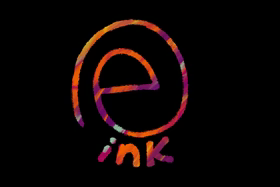By Abby Adams
Part one of Earth’s Final Chapter, “Avinon” introduces the reader to a post-apocalyptic Earth with an intimate portrait of three people struggling to survive. The story teases several elements that will play a larger role in later sections, such as mutants, lost technology, and the ominous Planetary Council. Written in fast-paced present tense, the narrative continuously keeps the reader engaged and interested. The writing flows well and is easy to follow, particularly during the action sequences. While following the adventures of the titular protagonist and his two companions, the story explores themes of family, growing up, and the unexpected twists of life. The vivid illustrations are a wonderful supplement to the text as well.
Part Two of the series, “Captain Taylor: Starship Ceu” is an excellent and intriguing expansion on the world. Here, the setting jumps from an isolated North America in “Avinon” to a busy starship potentially making first contact with alien life. The character development and dialogue improve from the previous book, and the characters are well rounded with believable motives. The reader learns more about the world’s past, and the villainous Planetary Council gains much more nuance. Thematically, this book explores questions of personal ambition versus a greater good, and who gets the right to determine ‘greater good’ in the first place. It is fascinating to watch characters grapple with questions and judgement calls in grey areas, knowing they lack all the information. “Captain Taylor” is a solid addition to Earth’s Final Chapter and certainly clinches the reader’s interest in the rest of the books.
Book Three, “Brother Leon” brings a new writer and a darker tone. The narrative shifts away from the Planetary Council to a young and struggling European Empire. The fate of religion in the post-nuclear world is addressed for the first time, and the reader learns far more about the devastating wars of the past. The violence in the writing and illustrations is visceral throughout, but well-handled and never veers into unnecessary gore. This book brings in more humor as well, which is welcome alongside some of the heavier themes. “Brother Leon” readily delves into questions about freedom and terrorism, whether and when violence is justified, and what turns people into monsters. The illustrations are particularly rich in this installment and help give it additional depth.
Book Four, “Kay: Capital City Arena Champion” is action-packed from beginning to end. As with the previous books by this author, the motion and fight sequences are particularly well done. In a story somewhat reminiscent of The Hunger Games, the reader follows the dramatic story of an enslaved gladiator as she fights to survive inside the arena and out of it. Once again, the story explores the dark side of the commerce and industries that arose after the Great War devastated humanity. This book has a large and colorful cast of characters, including a number of mutants and cyborgs. The cruelties of slavery and the will to survive take center stage in Kay’s story. Quiet plots in the background also hint at larger elements moving in the overall series.
“Chibuzo: The Goblin Shark” is an excellent final piece for Volume I of Earth’s Final Chapter. It introduces a mutant protagonist for the first time as the story ventures onto Earth’s dangerous and lawless oceans. The characters are dramatic and vivid in a pleasing throwback to other staples of the piracy genre like Treasure Island. Their rowdy, unpredictable interactions drive the plot and remain thoroughly engaging throughout the story. The writing is well balanced between dialogue, action, and exposition with a steady undercurrent of humor. Similarly to Book II, the author explores the perils and rewards of ambition and power. The ending will certainly leave the reader intrigued and eager for the next volume.

